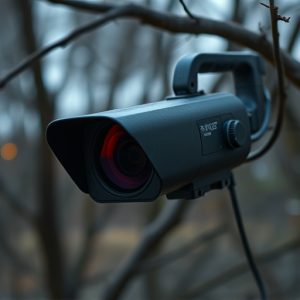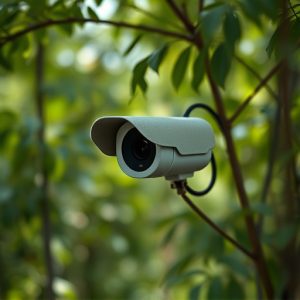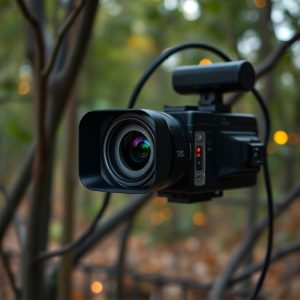Unveiling Disguised Cameras: Light-Based Identification Techniques for Wireless Spy Camera Phone Apps
Wireless Spy Camera Phone Apps leverage smartphone technology to detect hidden cameras using advance…….
Wireless Spy Camera Phone Apps leverage smartphone technology to detect hidden cameras using advanced light analysis and image processing. These apps identify infrared or UV light signatures, illuminate obscured areas, and pinpoint the location of covert surveillance equipment, enhancing privacy and security. By combining sensors, algorithms, and machine learning, they offer discreet monitoring for personal and professional use, while ongoing technological advancements and user education remain critical to combat evolving threats from disguised cameras.
Uncover hidden threats with our in-depth exploration of disguised camera identification using lights. This article delves into the effectiveness of wireless spy camera phone apps, exploring the science behind light-based identification and comparing active vs passive detection techniques. We discuss practical implementations and applications, while addressing challenges and emphasizing privacy considerations. Discover how these apps empower users to navigate today’s digital landscape with enhanced awareness, ensuring both safety and confidentiality.
- Understanding Wireless Spy Camera Phone Apps
- The Science Behind Light-Based Identification
- Detection Methods: Active vs Passive Techniques
- Implementation and Practical Applications
- Overcoming Challenges and Ensuring Privacy
Understanding Wireless Spy Camera Phone Apps
Wireless Spy Camera Phone Apps have become a prevalent tool for individuals seeking to maintain privacy and security in their personal spaces. These apps leverage the camera capabilities of modern smartphones to capture hidden cameras, providing users with a means to identify potential surveillance devices. By utilizing specific lighting conditions, such as infrared or UV light, these applications can detect even discreetly placed cameras that might go unnoticed by the naked eye.
The technology behind these apps involves sophisticated image processing algorithms that analyze light patterns and reflections. When activated, the app emits specific lights or uses existing phone flash to illuminate areas that may be obscured or protected by infrared filters commonly used in hidden cameras. This process allows the app to detect and pinpoint the location of these devices, ensuring users can take appropriate actions to secure their privacy.
The Science Behind Light-Based Identification
The Science Behind Light-Based Identification
In the realm of modern technology, light is no longer merely a source of illumination but also a powerful tool for identification. Disguised camera identification using lights tests leverages the unique properties of light to detect and confirm the presence of wireless spy cameras. This innovative approach involves analyzing patterns of light reflection, refraction, and interference that occur when light interacts with a hidden camera’s lens or sensor.
Through specialized algorithms and sensors integrated into a Wireless Spy Camera Phone App, these systems can identify subtle variations in light behavior that often go unnoticed by the human eye. For instance, the app might detect unusual fluctuations in brightness or patterns of light scattering, which could indicate the presence of a hidden camera. By combining this data with advanced image processing techniques, the app becomes an effective tool for navigating and securing environments where surveillance devices may be concealed, ensuring a safer digital landscape.
Detection Methods: Active vs Passive Techniques
In the realm of disguised camera identification, understanding the difference between active and passive detection methods is key. Active techniques involve emitting signals or light to detect reflections from hidden cameras, such as those used in wireless spy camera phone apps. These methods can be effective in real-time monitoring, utilizing infrared or laser pulses to pinpoint camera locations. However, they carry risks of exposure if not executed discreetly.
Passive techniques, on the other hand, rely on analyzing existing light sources and their interactions with hidden cameras. By studying natural or artificial light patterns, these methods can identify camera presence without emitting any signals, enhancing privacy. While passive techniques may require more time for detection, they offer a quieter, less conspicuous approach, making them appealing in scenarios demanding secrecy.
Implementation and Practical Applications
The implementation of a Wireless Spy Camera Phone App is a sophisticated process that leverages advanced technology to detect hidden cameras discreetly and effectively. This app utilizes a combination of specialized sensors, image processing algorithms, and machine learning techniques to scan for visual signals often emitted by covert surveillance equipment. By emitting specific light patterns or frequencies, the app can interact with these cameras, revealing their presence without alerting the individuals being monitored.
Practical applications of such technology are vast. It empowers individuals attending high-profile events, business meetings, or private gatherings to ensure their privacy and security. Moreover, it assists law enforcement agencies in forensic investigations by helping them uncover hidden surveillance devices during criminal probes. The Wireless Spy Camera Phone App offers a discreet, non-intrusive solution, making it a valuable tool for maintaining safety and privacy in both personal and professional settings.
Overcoming Challenges and Ensuring Privacy
Overcoming challenges in disguised camera identification is paramount to ensuring privacy and security. With the rise of wireless spy camera phone apps, detecting hidden cameras has become more complex as technology advances. These apps, often disguised as legitimate utilities, can be easily accessed and used by malicious actors to invade personal and public spaces. However, advancements in image and video analysis, coupled with regulatory measures, are helping to mitigate these challenges.
Privacy is a significant concern when dealing with hidden cameras. To address this, modern solutions incorporate advanced encryption techniques and secure data transmission protocols. Users of wireless spy camera phone apps must be educated on the potential risks and empowered with tools to identify and report suspicious activity. Regular updates and patches for such apps are essential to close security loopholes, ensuring that privacy remains a top priority in the digital age.
Disguised camera identification using light signals offers a promising approach to combating wireless spy camera phone apps. By understanding the science behind light-based identification and employing active or passive detection methods, we can significantly enhance security measures. Implementation in various settings, from homes to public spaces, ensures that privacy is protected against these covert threats. While challenges remain, ongoing advancements and awareness of potential risks are key to maintaining a safe digital environment, ensuring that the use of Wireless Spy Camera Phone Apps remains minimal and transparent.


